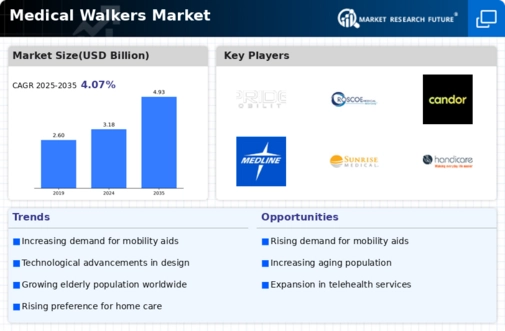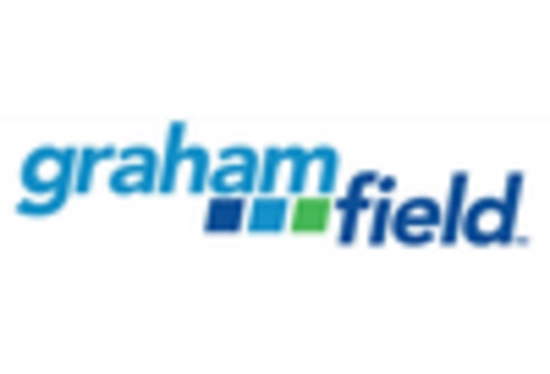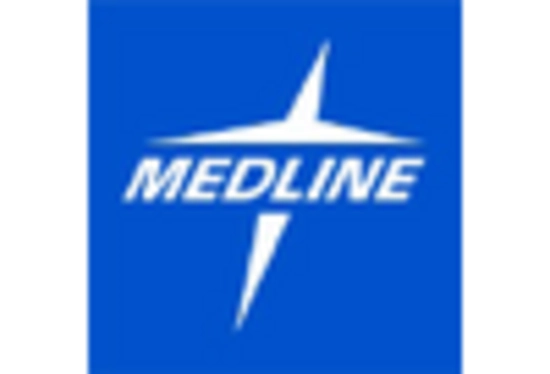Aging Population
The aging population is a primary driver of the Medical Walkers Market. As individuals age, they often experience mobility challenges, leading to an increased demand for assistive devices such as walkers. According to recent demographic data, the proportion of individuals aged 65 and older is projected to rise significantly, creating a larger consumer base for medical walkers. This demographic shift suggests that manufacturers may need to innovate and expand their product lines to cater to the specific needs of older adults. Furthermore, the growing awareness of mobility aids among healthcare providers and caregivers is likely to enhance the adoption of medical walkers, thereby driving market growth.
Technological Innovations
Technological innovations play a pivotal role in shaping the Medical Walkers Market. The integration of smart technology into walkers, such as sensors and connectivity features, is enhancing user experience and safety. These advancements allow for real-time monitoring of user mobility and health metrics, which can be beneficial for both users and healthcare providers. As technology continues to evolve, manufacturers are likely to invest in research and development to create more sophisticated products. This trend not only attracts tech-savvy consumers but also addresses the needs of caregivers who seek reliable and efficient mobility solutions for their patients.
Increased Healthcare Expenditure
Increased healthcare expenditure is a significant driver of the Medical Walkers Market. As countries allocate more resources to healthcare, there is a corresponding rise in the availability of assistive devices for patients. This trend is particularly evident in regions where governments are investing in rehabilitation services and home healthcare solutions. The World Health Organization has reported that healthcare spending is on the rise, which may lead to greater accessibility of medical walkers for patients in need. Consequently, this increased funding could stimulate innovation within the industry, encouraging the development of advanced walkers that enhance user experience and safety.
Growing Awareness of Mobility Aids
Growing awareness of mobility aids is increasingly influencing the Medical Walkers Market. Educational campaigns and outreach programs are helping to destigmatize the use of walkers, encouraging more individuals to seek assistance when needed. This shift in perception is likely to lead to higher adoption rates among various demographics, including younger individuals recovering from injuries. As awareness increases, healthcare professionals are also more likely to recommend walkers as part of rehabilitation programs. This trend may result in a broader acceptance of medical walkers, ultimately driving market growth and prompting manufacturers to diversify their offerings to meet evolving consumer preferences.
Rising Incidence of Chronic Diseases
The rising incidence of chronic diseases is another crucial factor influencing the Medical Walkers Market. Conditions such as arthritis, stroke, and other mobility impairments are becoming increasingly prevalent, necessitating the use of walkers for rehabilitation and daily activities. Data indicates that millions of individuals are affected by these conditions, leading to a heightened need for effective mobility solutions. As healthcare systems focus on improving patient outcomes, the demand for medical walkers is expected to grow. This trend may prompt manufacturers to develop specialized walkers that address the unique requirements of patients with chronic illnesses, thereby expanding their market reach.

















Leave a Comment